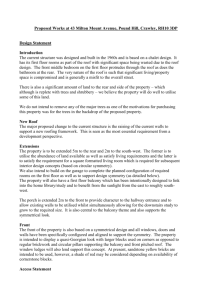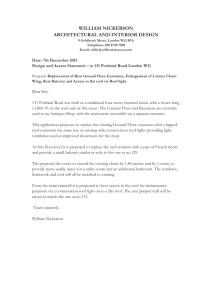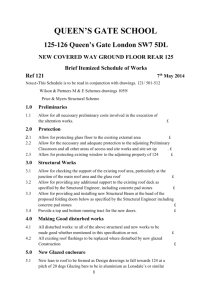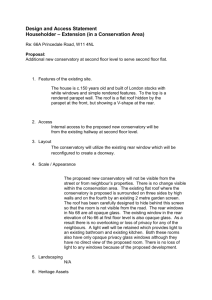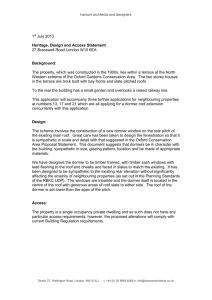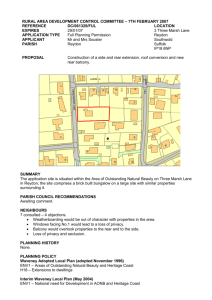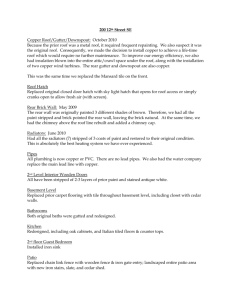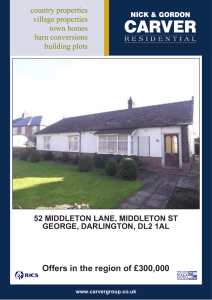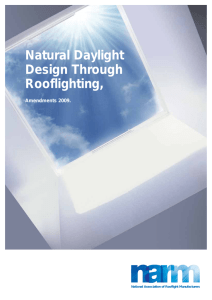roof beauty
advertisement
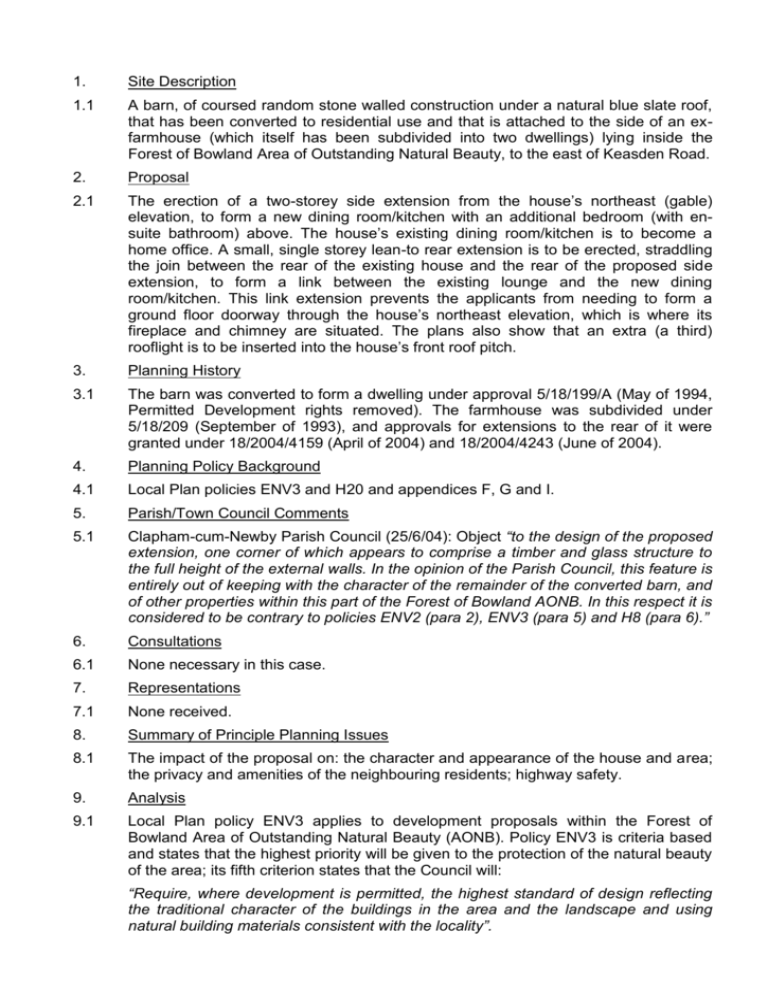
1. Site Description 1.1 A barn, of coursed random stone walled construction under a natural blue slate roof, that has been converted to residential use and that is attached to the side of an exfarmhouse (which itself has been subdivided into two dwellings) lying inside the Forest of Bowland Area of Outstanding Natural Beauty, to the east of Keasden Road. 2. Proposal 2.1 The erection of a two-storey side extension from the house’s northeast (gable) elevation, to form a new dining room/kitchen with an additional bedroom (with ensuite bathroom) above. The house’s existing dining room/kitchen is to become a home office. A small, single storey lean-to rear extension is to be erected, straddling the join between the rear of the existing house and the rear of the proposed side extension, to form a link between the existing lounge and the new dining room/kitchen. This link extension prevents the applicants from needing to form a ground floor doorway through the house’s northeast elevation, which is where its fireplace and chimney are situated. The plans also show that an extra (a third) rooflight is to be inserted into the house’s front roof pitch. 3. Planning History 3.1 The barn was converted to form a dwelling under approval 5/18/199/A (May of 1994, Permitted Development rights removed). The farmhouse was subdivided under 5/18/209 (September of 1993), and approvals for extensions to the rear of it were granted under 18/2004/4159 (April of 2004) and 18/2004/4243 (June of 2004). 4. Planning Policy Background 4.1 Local Plan policies ENV3 and H20 and appendices F, G and I. 5. Parish/Town Council Comments 5.1 Clapham-cum-Newby Parish Council (25/6/04): Object “to the design of the proposed extension, one corner of which appears to comprise a timber and glass structure to the full height of the external walls. In the opinion of the Parish Council, this feature is entirely out of keeping with the character of the remainder of the converted barn, and of other properties within this part of the Forest of Bowland AONB. In this respect it is considered to be contrary to policies ENV2 (para 2), ENV3 (para 5) and H8 (para 6).” 6. Consultations 6.1 None necessary in this case. 7. Representations 7.1 None received. 8. Summary of Principle Planning Issues 8.1 The impact of the proposal on: the character and appearance of the house and area; the privacy and amenities of the neighbouring residents; highway safety. 9. Analysis 9.1 Local Plan policy ENV3 applies to development proposals within the Forest of Bowland Area of Outstanding Natural Beauty (AONB). Policy ENV3 is criteria based and states that the highest priority will be given to the protection of the natural beauty of the area; its fifth criterion states that the Council will: “Require, where development is permitted, the highest standard of design reflecting the traditional character of the buildings in the area and the landscape and using natural building materials consistent with the locality”. 9.2 Local Plan policy H20 supports proposals to extend existing dwellings as long as such extensions, in their scale, design, proportion and materials, respect the original properties and would not have an adverse effect on the street scenes. Policy H20 opposes extensions that would unacceptably harm neighbours’ privacy or amenities, or, except in certain cases, that would result in a shortfall in off-street parking. 9.3 The Parish Council’s comment raises material planning issues but refers to two policies that do not apply in this case: Local Plan policy ENV2 is not applicable because the site does not lie within the Special Landscape Area, and Policy H8 is not applicable because the proposed development does not involve the conversion of a rural building to residential use. Nevertheless, policies ENV3 and H20 contain equivalent paragraphs/criteria to those referred to by the Parish Council, requiring the proposed development to maintain the natural beauty of the area and to respect the original building, including its relationship to neighbouring buildings in the “street”. 9.4 The two-storey side extension is to project 5 metres from the entirety of the dwelling’s gable (flush to the its front and rear elevations) and is principally to comprise natural stone walling under a natural slate roof to match the existing. However, the front corner of the side extension (an area extending laterally, into its front and side elevations, 1.8 metres from the extension’s front corner) is to comprise timber-framed glazing from its internal ground floor level up to its roof; that glazing is to be recessed behind the outer face of the extension’s front and side elevations. 9.5 Overall, the side extension will continue the form of the existing building, which is a typical, and sensitively converted, long barn attached to a former farmhouse. The sideways extension of the building will not in itself conflict with the character of the original building or group of buildings. The proposal is for a “continuous” extension, flush to the existing building’s front and rear elevations and continuing its roof slopes, so it is important that its walling and roofing materials/style, where it is to meet the existing building, closely match the existing. Conditions can be imposed to control the stonework and roofing slates used and thereby ensure that they match the existing. The extension’s glazed corner will be a novel feature and will contrast with the natural stone walling to the remainder of the building, although glazed screens are common features within the former cart openings of converted barns, and Dovenanter Barn has such a glazed screen. Although it is not a traditional element of agricultural barns, the proposed glazed corner will not have a domesticating impact on the building, in the way that horizontally emphasised and regularly spaced window openings would, because such corners are not common in dwellings either. The glazing will take up only a small proportion of the extended dwelling’s surface area, will be an interesting feature of high quality construction, and will not have an unacceptable affect on the building’s intrinsic character. 9.6 The house has two flush fitting rooflights in its front roof slope and one flush fitting rooflight in its rear roof slope, all positioned low in their respective slopes. Being flush fitting and positioned towards the eaves rather than roof ridge, the existing rooflights do not harm the character or appearance of the building. Subject to a condition to make sure that it is flush fitting, the proposed additional rooflight in the front roof slope will continue that existing pattern and will not harm the building or area. 9.7 The proposed link extension to the rear of the house and side extension is to project 1.5 metres from the back of the house and is to be 7 metres wide. Small lean-to or pitched roofed extensions are already part of the character of this group of buildings, because there is a lean-to roofed projection from the front of Dovenanter Barn and there are pitched roofed porches to the front of the adjoining dwellings. In addition, there are approvals for single storey extensions to the rear of the adjoining houses. In this context, the link extension, which is to be small in scale, discreetly sited, and built using natural stone and slate to match the main building and with timber framed glazing, will not harm the character or appearance of the building or area. 9.8 On the remaining planning issues, the positioning of the extensions in relation to the two other houses in the group is such that they will cause no serious harm to neighbouring residents’ privacy or amenities, and the developments will not prejudice highway safety or result in a shortfall in the dwelling’s off-street parking capacity. 10. Recommendation 10.1 Approval of planning permission. 11. Summary of Conditions 11.1 Standard time limit. 11.2 Prior approval of sample panel of stonework. 11.3 Prior approval of sample of roofing slate. 11.4 Velux windows to be flush fitting – to match the existing. 11.5 Window surrounds to be stone lintels, sills and quoins – to match existing. 11.6 Glazed corner to be recessed to the internal face of the side extension’s walls. 11.7 Prior approval of constructional details of glazed corner.
